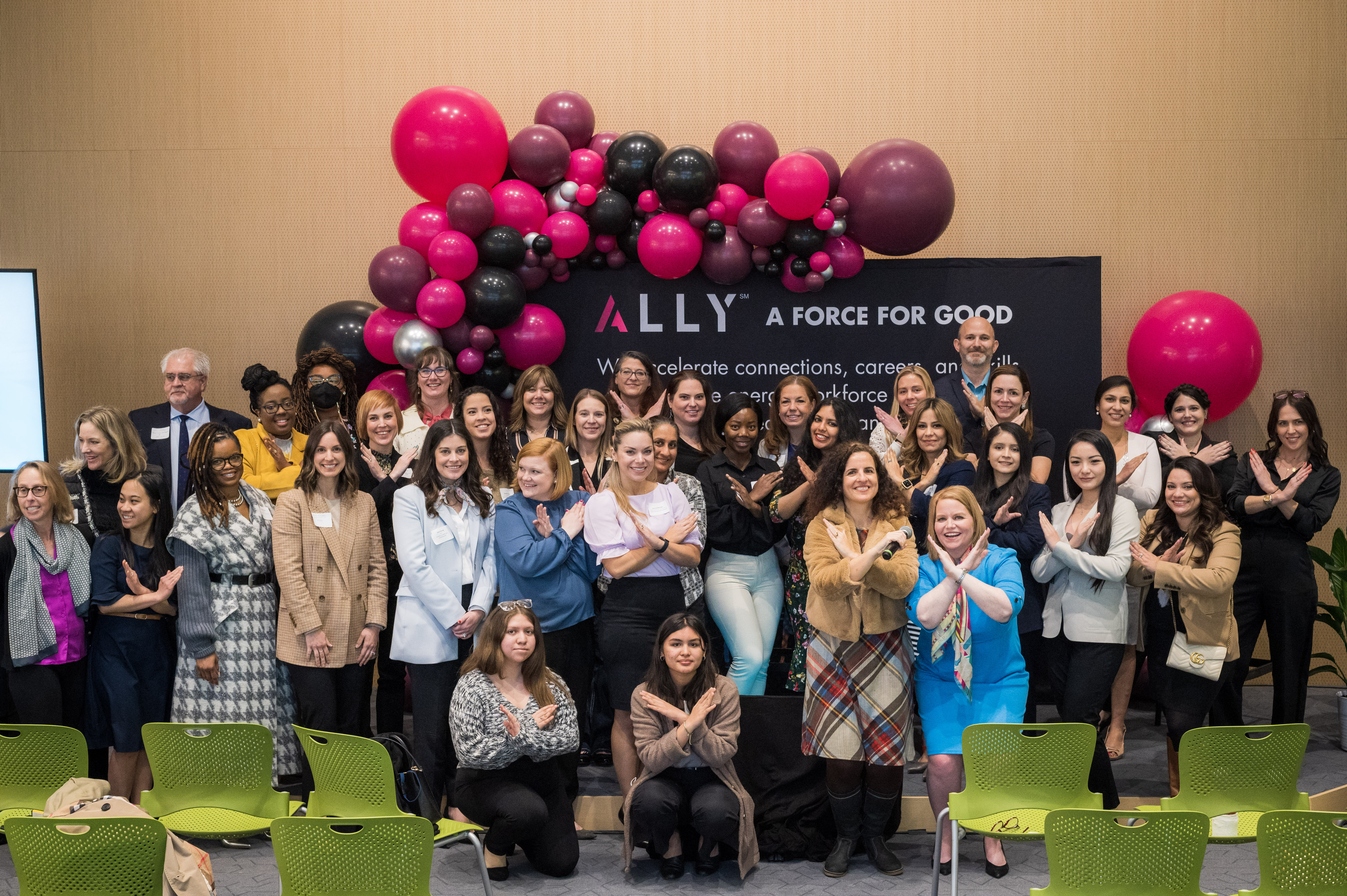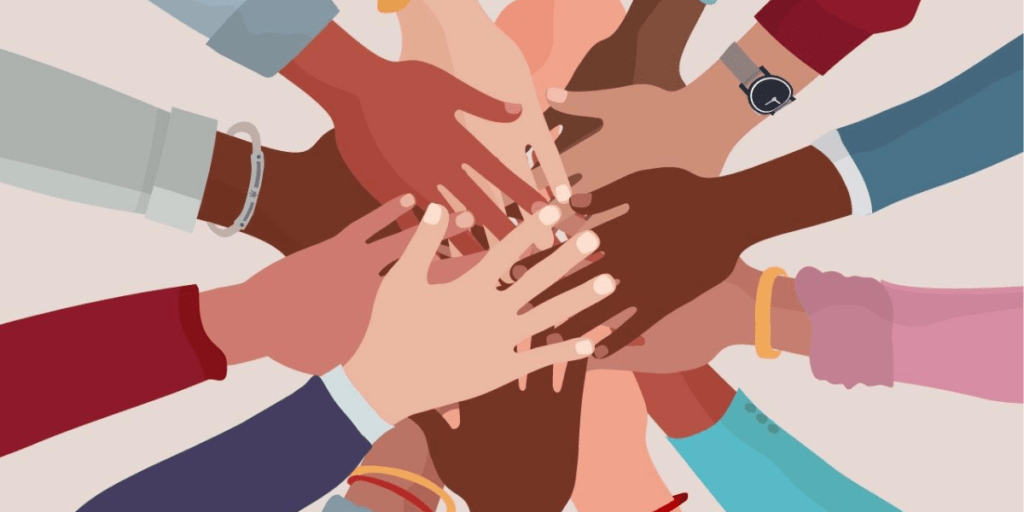A storm of activism that has swept the globe following the murder of George Floyd and since then, allyship has been the leading conversation among individuals, communities and companies. We’re discovering racial inequities that have burdened minorities for decades, and the world is finally listening. Our members too have been vocal about wanting action items to follow through with their education on allyship. You asked: What does allyship look like in action?
That’s why we sat with Rodney Williams, a major mover in diversity and inclusion, for our session on Putting Allyship Into Action. During his leadership for ‘ONE’, National Grid’s multicultural employee resource group (ERG), membership increased by 95%. Rodney also co-founded the ‘Development Programme for Diverse Leaders’, designed to accelerate and support BAME employees to positions of management. Rodney has ranked #2 in the EMpower and Yahoo Finance Top 100 Ethnic Minority Future Leader Role Models list 2020. He kind of knows what he’s doing.
Whether you’d like to become an ally, encourage your organization to take part in diversity and inclusion efforts, or are moving through this transition as a minority yourself, Rodney has defined actionable items as well as barriers to look out for on the way.
Actions speak louder than tweets.
Young people get it. They’re challenging the intersection of climate and engagement. They have been our primary movers in the Black Lives Matter movement and consistently use their social media platforms to spread awareness, share information, and keep these topics relevant. Allyship does not stop there- our actions must align with our words.
To be an ally, as an individual at any level in your career, you can take action at any point, Rodney explained. He states the first step is education. “Speak with those who are being impacted by these issues. We’ve all got a part to play and can be really proactive- employee resource groups are a great place to start. There’s power in numbers.”
What if my organization doesn’t have a Diversity and Inclusion Program?
For companies lacking a D&I program and would like to start one, the first step is getting real with where you are at. Rodney recommends setting a benchmark and gathering quantitative data. Without that, change cannot be measured.
Your first initiative in gathering data is to understand the makeup of your organization- how many ethnic people are working in your organization? Use this to observe the employee lifecycle. Find out who is getting promoted and if they are moving to leadership positions. How long are you retaining employees? This data will reveal if minorities are being developed in comparison to their counterparts. When collecting data, do not stop at tracking ethnicity, but consider those who may be doubly discriminated. - such as those with disabilities, physically or mentally.
Once you’ve established the statistics of your organization’s minorities, dig deeper. Start asking questions through surveys to get the qualitative data and understand how included employees feel. Do they feel like the company values their ideas? Do their voices feel heard? Recent studies show that while white employees feel as though they are allies, their minority counterparts feel as though they have white allies in the workplace.
There are some companies who even go so far as to use daily targets within their business operations focused on diversity and inclusion- “Part of their day job is to think about these things and take action,” Rodney revealed. How does your organization manage diversity in the workplace? Consider written policies in your employee handbook (information about non-discrimination laws, code of conduct, compensation and benefits policy), address micro-aggressions, having an accountability plan, and more.
Get the big guys on board.
During his development of ONE, Rodney made sure he had proper governance in place. As he explained, secure the right governance in place who will “sing your praises.” He saw the best results by presenting his idea as a business focus and shared a vision that extended beyond raising awareness and focused on providing real world resources for minorities.
Money talks.
Once you’ve found yourself in front of leadership, you can have those conversations about the checkbooks. Create a budget. Rodney explained his first budget was limited, and eventually went to different areas of the business asking for further sponsorship.
Armor up.
As Rodney was a younger/newer employee when he took leadership of ONE, he struggled with lacking the title or company credibility. For those who want and know change can take place, this can be particularly difficult.
From Rodney’s own experience, “there will be managers who don’t quite ‘get it.’” Often, we see ERG groups through the lens of a once-per-quarter ethnic appreciation event. For Rodney, it was particularly difficult to gain participation from middle management. Even after receiving the approval from executives, he’d next be “met with blank faces.” Volunteers on the committee also found it difficult to earn approval from managers to volunteer in ERG’s. Some managers would expect it to be done in employees' spare time, not as a part of their "day job".
Combat this issue with education- there are major business benefits resulting from diversity. Companies within the top quartile for racial and ethnic diversity are 35% more likely to have financial returns against their competitors, and those in the top quartile for gender diversity are 15% likely to have higher returns against their competitors. If you have the benefits and business case ready, managers will be more willing to pay attention. “Articulate these statistics in a way that presents as a win-win for managers,” Rodney suggested. “Not only are they jumping onto the D&I train but they’re supporting the long-term development of their employees and thus, the bigger picture of the company.”
Additionally, in rejecting diversity and inclusion efforts, organizations run the risk of their reputation. Employees that have experienced discrimination within large companies are not shy to expose this behavior via social media, a now a common reaction. When employees don’t feel heard, they will find a place where they do . And the first place they go to is their personal network.
For humanity’s sake!
It’s important to remind those who don’t “get it” that their perspective and experiences are different from others. Even minority executives might push against these programs because of their own success. By listening and understanding what people on the front line are experiencing, you are creating a foundation for yourself to put allyship into action.
"Remember that we’re human", Rodney said. Almost every individual is subject to discrimination in some form - “we must understand this, and listen to other perspectives, that’s the biggest driver of why we need to be proactive".
What can white people do?
Putting allyship into action can look different for everyone. But the first step is to once again, educate yourself. The internet is endless with historic resources from different perspectives. History is written by the winners and is often one-sided. Know histories apart from your own. Finding those different perspectives will help acknowledge your own privilege. “Privilege exists when you don’t have to think about anything,” Rodney stated.
Be respectful in the process of educating yourself. A lot of us are flocking to our Black peers to better understand their experience. It’s important that we don’t treat others like a “diversity Google” as Rodney called it.
Next, white people can and need to show up. Be consistent with your energy and leverage your privilege to speak up. “If you see or hear something that isn't right, say something.” This requires an increased awareness: pay attention more in meetings and interactions to ensure that our minority peers are not being passed over. It takes practice, and it takes time.
And lastly, never make assumptions. One ethnic experience does not define the next. This is where we open ourselves up to listening more and considering the different layers of diversity and inequity that exist all around us – this time we’ll be able to see it better.
And for those who are ethnically diverse? How do we find allies?
As a black man, Rodney identified allies by connecting to people who’d listen to his experiences and challenges. He tried teaching empathy by framing his experiences in a relatable way. He asked people to think about a time where they’ve been excluded. How did they feel? By getting them to connect with their own feelings, they were eager to get on board.
“To those who are feeling the discrimination, who are getting their ideas knocked down or aren’t being taken seriously, be resilient,” Rodney said. Diversity is a unique, irreplaceable attribute that inspires ingenuity in different ways of thinking in the workplace. “If you lose that, you lose yourself.”



